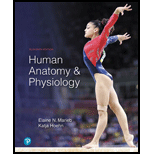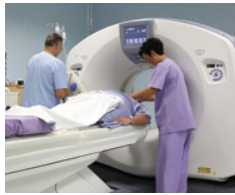
44-Year-Old Male with Skull Fracture
William Hancock, 44, fell from the scaffolding at a construction site. When emergency personnel arrived, they found him unconscious but with stable vital signs. As paramedics placed him on a backboard to stabilize his head, neck, and back, they noted watery blood leaking from his right ear. In the hospital, Mr. Hancock regained consciousness and was treated for deep lacerations on his scalp and face. Head CT scans revealed both longitudinal and transverse fractures of the right petrous temporal and sphenoid bones that extended through the foramen rotundum and foramen ovale.

The following observations were recorded on Mr. Hancock’s chart on admission:
•Complete loss of hearing in the right ear.
•Paresthesia (sensation of “pins and needles’) at the right corner of the mouth, extending to the lower lip and chin.
•Numbness of the right upper lip, lower eyelid, and cheek.
•Right eye turned slightly inward when looking straight ahead. Diplopia (double vision), particularly when looking to the right.
1. NCLEX-STYLE Which of the following choices best describes the fluid leaking from Mr. Hancock's ear and the cause of that leakage?
a. Blood and mucus are leaking because the sphenoid bone is fractured.
b. Blood and mucus are leaking because the petrous part of the temporal bone is fractured.
c. Blood and cerebrospinal fluid are leaking because the petrous part of the temporal bone is fractured.
d. Blood and sweat are leaking because the sphenoid bone is fractured and because his temperature was elevated.
Want to see the full answer?
Check out a sample textbook solution
Chapter 13 Solutions
Human Anatomy & Physiology (11th Edition)
- Molecular Biology Question Please help. Thank you Explain what is meant by the term “defective virus.” Explain how a defective virus is able to replicate.arrow_forwardMolecular Biology Explain why changing the codon GGG to GGA should not be harmful. Please help . Thank youarrow_forwardStage Percent Time in Hours Interphase .60 14.4 Prophase .20 4.8 Metaphase .10 2.4 Anaphase .06 1.44 Telophase .03 .72 Cytukinesis .01 .24 Can you summarize the results in the chart and explain which phases are faster and why the slower ones are slow?arrow_forward
- Can you circle a cell in the different stages of mitosis? 1.prophase 2.metaphase 3.anaphase 4.telophase 5.cytokinesisarrow_forwardWhich microbe does not live part of its lifecycle outside humans? A. Toxoplasma gondii B. Cytomegalovirus C. Francisella tularensis D. Plasmodium falciparum explain your answer thoroughly.arrow_forwardSelect all of the following that the ablation (knockout) or ectopoic expression (gain of function) of Hox can contribute to. Another set of wings in the fruit fly, duplication of fingernails, ectopic ears in mice, excess feathers in duck/quail chimeras, and homeosis of segment 2 to jaw in Hox2a mutantsarrow_forward
- Select all of the following that changes in the MC1R gene can lead to: Changes in spots/stripes in lizards, changes in coat coloration in mice, ectopic ear formation in Siberian hamsters, and red hair in humansarrow_forwardPleiotropic genes are genes that (blank) Cause a swapping of organs/structures, are the result of duplicated sets of chromosomes, never produce protein products, and have more than one purpose/functionarrow_forwardA loss of function mutation in Pitx1 enhancers can cause (blank) Removal of Pitx1 exons and growth of ectopic hindlimbs, growth of extra ectopic forelimbs, loss of forelimb specification and development, and loss of hindlimb specification and developmentarrow_forward
- Hox1a most likely contributes to (blank) patterning in the developing embryo? Ventral, posterior, limb or anteriorarrow_forwardSelect all of the following that can help establish Hox gene expression boundaries (things that affect Hox and not things that Hox affects). Retinoic acid, anterior/posterior axis, fibroblast growth factors, vagal neural crest, and enhancersarrow_forwardEctopic expression of Hox often results in (blank) phenotypes. (Blank) transformations are characterized by the replacement of one body part/structure with another. Hoxeotic, homealoneotic, joexotic, or homeoticarrow_forward
- Surgical Tech For Surgical Tech Pos CareHealth & NutritionISBN:9781337648868Author:AssociationPublisher:CengageUnderstanding Health Insurance: A Guide to Billin...Health & NutritionISBN:9781337679480Author:GREENPublisher:Cengage
 Fundamentals of Sectional Anatomy: An Imaging App...BiologyISBN:9781133960867Author:Denise L. LazoPublisher:Cengage Learning
Fundamentals of Sectional Anatomy: An Imaging App...BiologyISBN:9781133960867Author:Denise L. LazoPublisher:Cengage Learning  Medical Terminology for Health Professions, Spira...Health & NutritionISBN:9781305634350Author:Ann Ehrlich, Carol L. Schroeder, Laura Ehrlich, Katrina A. SchroederPublisher:Cengage Learning
Medical Terminology for Health Professions, Spira...Health & NutritionISBN:9781305634350Author:Ann Ehrlich, Carol L. Schroeder, Laura Ehrlich, Katrina A. SchroederPublisher:Cengage Learning





